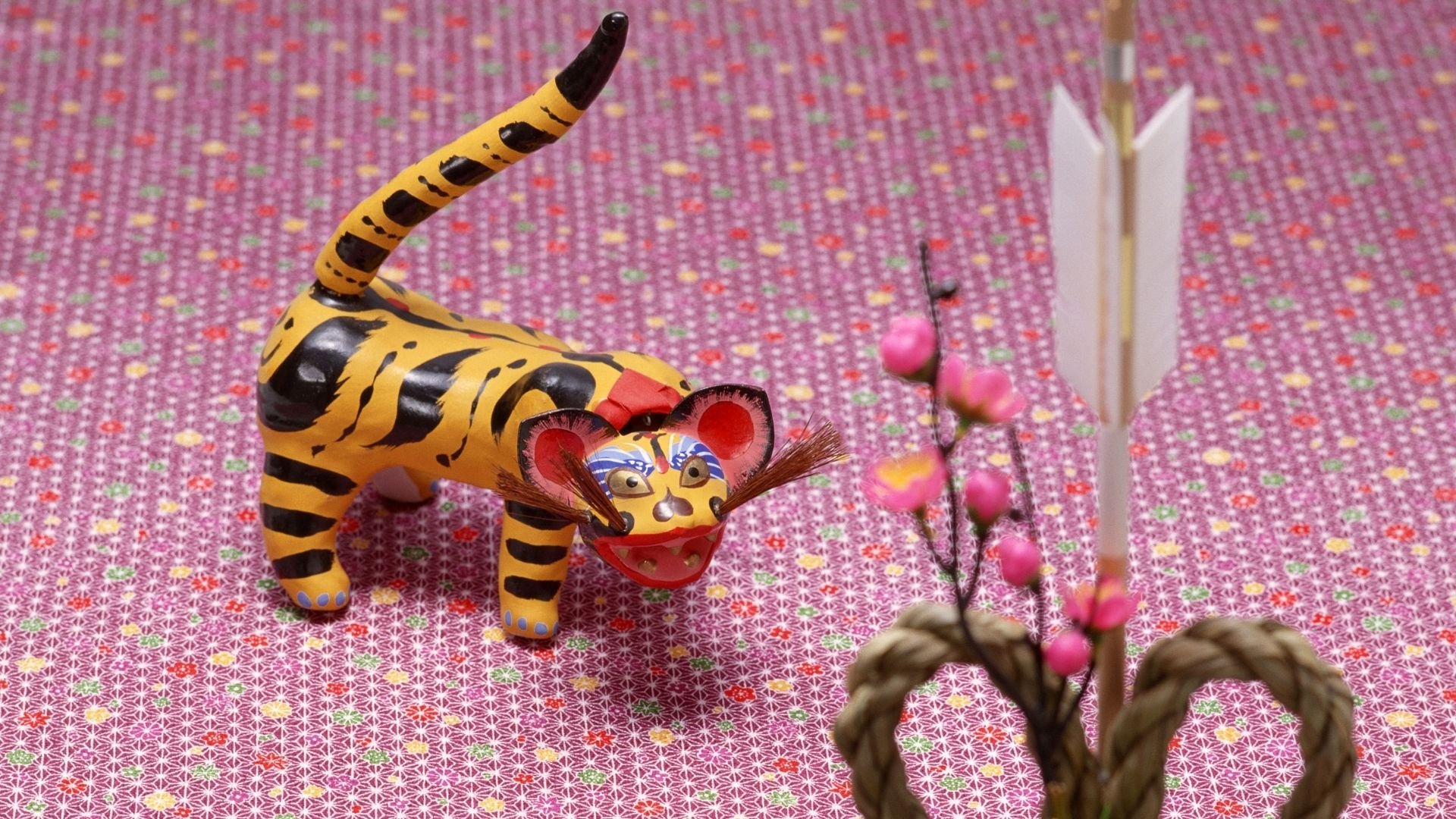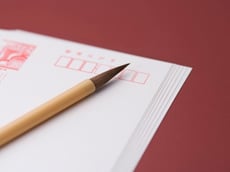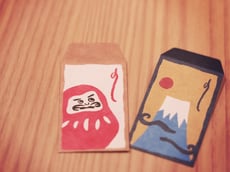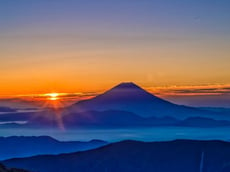
Like many of us, thinking about the things that you wish could do this winter break, you may be wondering just how to spend the New Year’s holiday. Perhaps this is the perfect opportunity to spend the holiday and welcome the new year Japanese style! Check out these “5 Tips for Celebrating New Year in Japan” below, and make this an extra special cultural event for your family!
Sending Nengajo to Family and Friends

Nengajo, or New Year greeting cards, are a lot like Christmas cards in western cultures, but unlike Christmas cards, they are postcards. In many cases they are pre-printed with stamps for convenience. The postcards can be purchased at post offices or even at convenience stores, and often depict the zodiac animal for the coming year. 2022 will be the year of the tiger!
But, personalized cards also can be printed with a favorite photo or decorated with your own personal flair. Just don’t forget to add your handwritten message before sending them off! Timing is important, too! For many, they anticipate receiving the cards on January 1, and in order to ensure this, cards must be posted by December 25. They should also have the word “Nenga” or the Chinese characters “年賀” written on the address side. This will make sure they don’t get delivered until New Year’s Day. By sending a New Year’s card, you can show your friends and colleagues appreciation and wish them luck for the new year.
Cleaning Mind, Body, and Kitchen Cupboards

In Japan, it is tradition to clean the entire house in December. It is called Oh-souji, and literally means “big cleaning,” but it is more than just having a clean house. It is believed that you need to cleanse and purify your house to welcome Toshigami-sama, or the God of the Year, who will bring happiness and wealth into your home. This is actually what Oshogatsu, or the new year holiday is actually all about - welcoming this God. And the cleansing and purifying extend beyond just your house. It is said that you can purify yourself with the sound of the bells that chime on the evening of New Year’s Eve and into the new year. Temples across Japan ring their bells 108 times, which is said to be the number of worldly desires we all have. By the sound of a bell, we can let go of our desires, as well as troubles of the past year. Through this purification we can change into our new self, ready to welcome the God of the Year and start off with a pure heart and clean spirit.
Decorations Lead the Way

In order for the God of the New Year to find your house and bless you with happiness and prosperity, you will need to place signs and offerings. Kadomatsu is a sign or landmark at the entrance of your house to show you are ready to invite prosperity. Traditionally, Kadomatsu is a pair of decorative arrangements with bamboo, pine trees, and other auspicious plants, but these days many houses put up printed images of Kadomatsu on small pieces of paper. A decorated wreath or rope called Shimenawa or Shimekazari is also put up at the entrance of your house. This indicates it is a sacred space inside and it is believed to drive away evil spirits. Kagamimochi, made up of two layers of rice cakes with a small citrus on the top, are offerings to the God and are placed at important places in the household such as kitchen, living room and bathroom. All these items can even be purchased at local supermarkets, which probably explains some of the questions you might have shopping in these festive last days of the year.
Fun for the Children

While adults are cleaning the house and cooking for family gatherings for the new year holiday, the biggest concern of children for the new year is Otoshidama, a money gift, given to school age children in small decorative envelopes from their parents, relatives, and family friends. The amount of money varies depending on the age of the child and relationship between families, but usually 1,000 - 3,000 yen for elementary aged children, and 5,000 -10,000 yen for older children. Rather than toys, money is the gift here in Japan. I’m sure your children wouldn’t object to celebrating this part of the New Year traditional holiday!
Starting off Right

The ‘firsts’ of the new year are also highly valued in Japanese culture. Among the many firsts, the first sunrise is probably the most important for many Japanese because it is believed that new year starts with this sunrise and that the God of the New Year comes with the sun. People often rise early to go out and catch the sun peaking above the horizon for the first time, making wishes to have a good year. The first dream, the dream you have on the night of January 1st, is said to foretell your luck in the coming year. There are three things that are considered to be particularly auspicious if they appear in your dream, so be on the lookout for Mt. Fuji, a hawk, and an eggplant!

These are a few of traditions that you can practice and enjoy while staying safe and celebrating the dawn of 2022 with your family. We wish all our NIS families a warm and relaxing winter break, a healthy and promising start to 2022, and of course, more fun memories made at NIS! Happy New Year!









